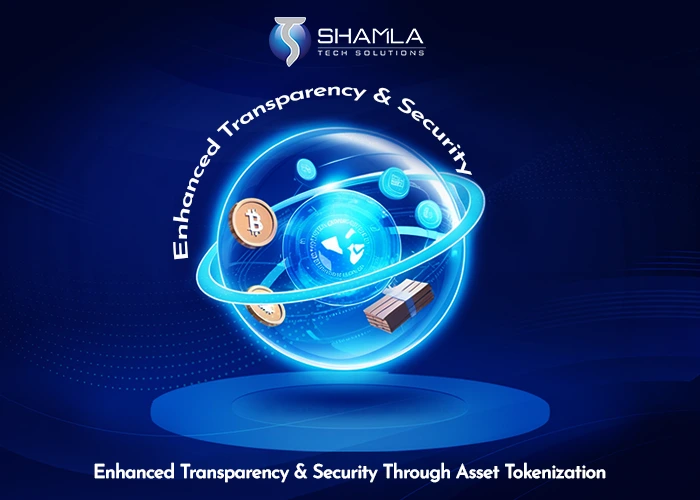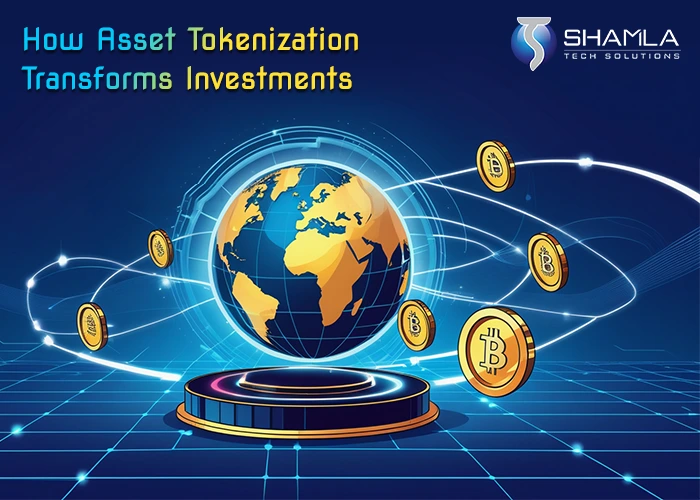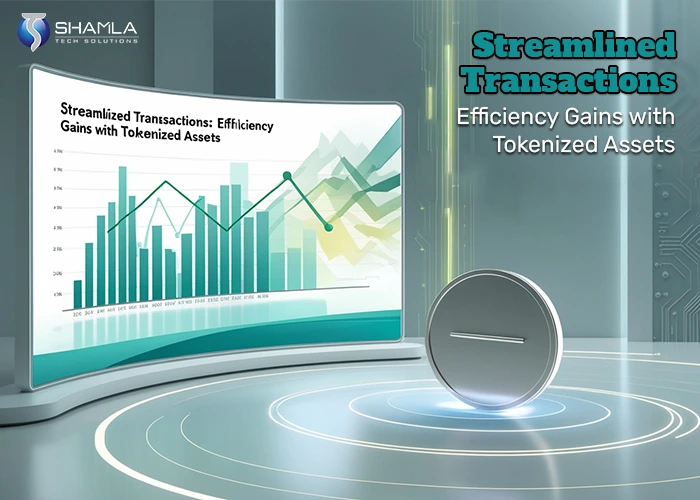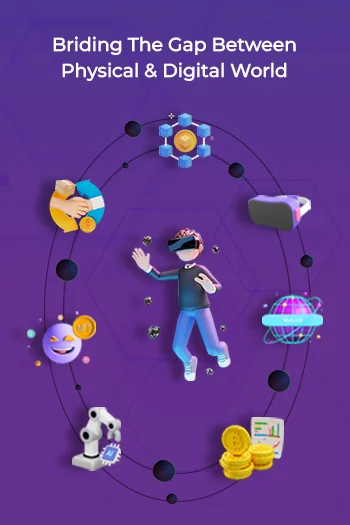
What Entities Can Be Tokenized?
Assets
Equity
Funds
Entities
Services
Goods
Intellectual Property (IP)
Revenue and royalties
Debt Instruments
Loyalty Plans
Digital Collectibles
Carbon Credits
Supply Chain Assets
Insurance Plans
Fine Art and Antiques
Real Estate Investment Trusts (REITs)

Why tokenize Real World Assets?
Real-world assets become on-chain tokens, therefore tokenizing their ownership rights. This method creates a digital replica of the underlying asset, therefore enabling on-chain management of the ownership rights of the asset and so bridging the gap between physical and digital assets. These are the benefits of token development.
Tokenized assets offer fewer transactional frictions, more liquidity, more access, transparent on-chain management, and less on-chain administration than standard assets. Tokenizing RWAs also combines the distribution, trading, clearing, settlement, and safeguarding procedures into a single layer in the context of financial assets, thereby simplifying the on-chain financial system with less counterparty risk as well as greater capital mobilization.
What are the Benefits of Tokenization?
New Opportunities
Cost Savings
Smart contracts are blockchain’s “worker bees,” automatically executing complex transactions under particular conditions. Smart contracts offer cost savings. Reducing steps upstream (token issuance) and downstream (servicing/maintaining) saves money. Lower expenses of launching and sustaining an offering can be shared by the issuer and the investor, thereby improving economics (yield or return).
How does this happen? Blockchain calculations can replace reconciliations as the one source of truth. Updates can be automatically sent to financial institutions’ systems via APIs for downstream processing. The blockchain superhighway will provide organizations more options in deciding how to retire legacy systems with expensive technology and outdated languages.
Streamlined Payment Processes
When an investment pays interest, tokenization benefits increase. Investors often receive coupons or dividends after third-party providers and back-office service verify wire instructions, postal addresses, and the cap table primary owner. This is costly and time-consuming. A tokenized security that makes regular payments can store the only information needed to send these payments directly to the investor’s digital wallet. Both sides have an immutable blockchain record of income payments, so they may be made quickly and correctly.
Complex asset-backed securities might produce uncertain or fluctuating revenue streams. Monthly cash payments are common with these investments. Blockchain technology to check wallet addresses and eliminate procedures to return funds to holders is crucial to servicing.
Enhanced Settlement Processes
Traditional investment transaction settlement takes three steps without blockchain. Start with the trade (matching purchase and sell order amounts). Next, clearing (two clearing members trade currency, making claims on each other) occurs. When cash is wired in return for a security transfer via DTC, the transaction concludes after two days (the normal settlement term for most securities, but some settlements are substantially longer).
Blockchain makes settlement virtually immediate. Match and settle are now required. No clearance is required. If the smart contract cannot swap cash for securities straight into each party’s wallet, the transaction will reverse. Both parties can refund cash and investments faster with this near-instantaneous settlement.
KYC And Client Eligibility Process Improvements
Digital wallets and smart contracts can store client eligibility, security-specific transfer, and regulatory constraints. This simplifies fund and security transfers and compliance monitoring. This helps financial organizations perform KYC procedures to prevent fraud, money laundering, and other crimes. Investors also profit since these time-consuming papers and applications may be done once and updated instead of with each new investment.
Tokenization streamlines asset creation, issuance, and management and creates more secure, transparent, and accessible markets for issuers and investors. This technology will gain momentum and real-world use cases as awareness grows. Some experts estimate that worldwide illiquid asset tokenization might reach $16 trillion by 2030, accounting for 10% of global GDP.

How Does Asset Tokenization Work?
- Asset Selection: Choose an asset to tokenize, such as real estate, art, or financial instruments.
- Legal Structure: Meeting regulatory criteria for tokenization.
- Token Creation: Create digital tokens representing asset shares on a blockchain platform.
- Smart Contract Implementation: Implementing smart contracts to automate and enforce token terms, including ownership rights and transaction rules.
- Distribution: STOs and private sales are ways to distribute tokens to investors.
- Secondary Market Trading: Increasing liquidity and investor exit options by trading tokens on secondary markets.
How Does Asset Tokenization Improve Liquidity?
Real World Asset Tokenization development (RWA) converts tangible assets into blockchain-safe digital tokens. These digital tokens represent genuine asset ownership or rights and may be traded or moved easily. RWA tokenization links actual assets to digital financial systems utilizing blockchain technology. This solution solves liquidity by making real estate and commodities easier to sell without middlemen.
Blockchain ensures secure, persistent, and transparent transactions. Smart contracts automate dividend payments and ownership transfers, eliminating middlemen. Previously hard-to-trade physical assets can now be split into digital tokens. This splitting procedure makes asset management easier and gives more investors a chance to participate in high-value commodities like expensive real estate or rare art. There by, the asset tokenization platform benefits investors
To boost market liquidity, many assets can be tokenized. In real estate, the benefits of asset tokenization that it enables manypeople to own sections of properties, increasing participation. Art and collectibles, traditionally reserved for the rich, can now be sold as tokens. Tokenizing commodities like gold, oil, and agricultural items simplifies trade and reduces storage and transfer expenses. Tokenizing financial instruments like bonds and stocks simplifies transactions and gives investors worldwide opportunity. Tokenization is versatile and offers many market growth opportunities.
Benefits of tokenization in real-world assetsthat it largely helps the investors and asset owners. Tokenized trading on digital platforms improves liquidity, a crucial issue for real-world assets. Fractional ownership makes pricey asset markets accessible to smaller investors. Blockchain eliminates middlemen and ensures safe, clear, and affordable transactions. Tokenized assets are available worldwide, attracting more investors. These developments speed up transactions and allow 24/7 trading, addressing conventional financial market issues and making things more flexible and efficient for everyone. Benefits of real estate tokenization illustrates how asset tokenization is changing the asset market by letting everyone participate in property at a fraction of the cost.
Can Tokenization Make Investing More Accessible?
To know about about investing in tokens, you need to learn about how to invest in tokenized assets. Asset tokenization significantly enhances investment accessibility by converting ownership rights of real-world assets into digital tokens on a blockchain. With fractional ownership made possible by this technique, investors can buy smaller amounts of high-value assets—such as fine art or real estate—which were customarily reserved for wealthy people. Reducing the entrance requirements helps a more varied set of investors to engage in these marketplaces. Analysis of Chains
Tokenization also lessens dependency on clearinghouses and middlemen, therefore lowering transaction costs and accelerating settlement times. This efficiency appeals to a larger audience more affordably and helps explain investing.
Blockchain technology also guarantees open and safe documentation of ownership and transactions, hence building investor confidence. The benefits of asset tokenization can draw those who would have been reluctant to make investments because of questions about fraud or lack of information.
By allowing fractional ownership, lowering expenses, and improving transparency, asset tokenization democratizes investing and thereby increases the availability of investment options to a larger population.

How Does Tokenization Enhance Transparency and Security?
Asset tokenization uses blockchain technology to generate immutable and accessible asset ownership and transaction records, improving transparency and security. Benefits of asset tokenization are that it secures transactions on a decentralized ledger by transforming real-world assets into digital tokens, preventing fraud and unauthorized changes.
This technique lets stakeholders see asset histories in real time by tracking ownership and returns. Such transparency builds investor trust and streamlines regulatory compliance by providing an unchangeable audit trail.
Smart contracts also automate contract enforcement, reducing human error and improving security. Tokenization streamlines processes and ensures parties follow agreements by integrating rights and duties directly into digital tokens.
Blockchain’s transparency and security added benefits of asset tokenization that make it a more efficient and trustworthy asset management and investing framework.
Conclusion
In conclusion, the benefits of asset tokenization development are transformative, offering enhanced liquidity through fractional ownership, increased accessibility by lowering investment barriers, and improved transparency and security via blockchain’s immutable ledger. These benefits of asset tokenization collectively democratize investment opportunities, streamline transactions, and build investor trust, marking a significant evolution in the financial landscape.
Furthermore, the benefits of asset tokenization extend to operational efficiency by reducing intermediaries, thereby lowering transaction costs and settlement times. This technological advancement also facilitates fractional ownership, allowing investors to diversify portfolios by acquiring portions of high-value assets. Additionally, the benefits of asset tokenization include enhanced global accessibility, enabling a broader investor base to participate in markets previously limited to institutional players. Collectively, these benefits of asset tokenization are revolutionizing the financial landscape by making investments more efficient, inclusive, and secure.


